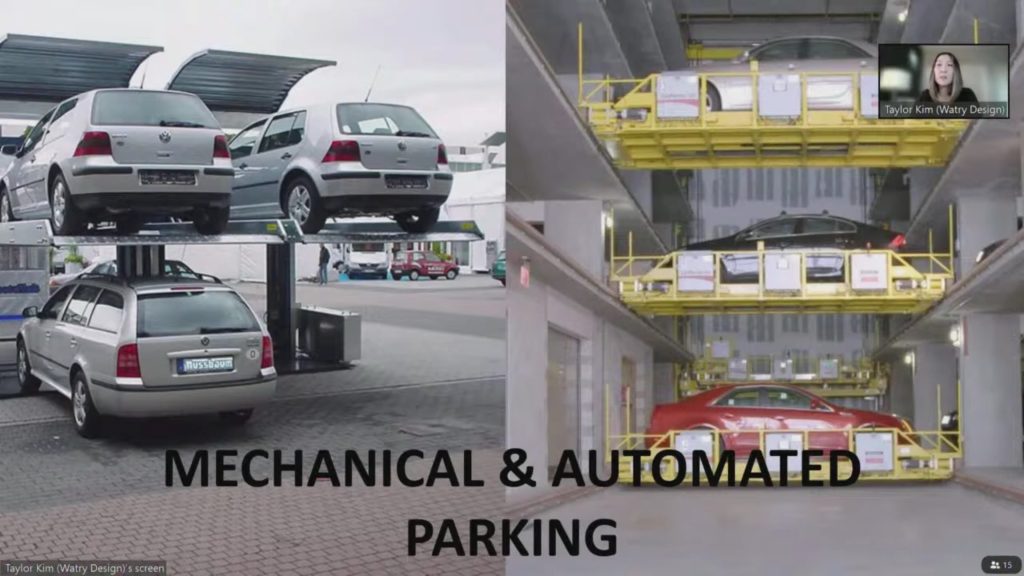With no new business on the agenda, Santa Clara’s Planning Commission took the opportunity to learn more about parking lift technology. Representatives from Watry Design, a local firm that specializes in parking garage design, led the talk.
The discussion centered around two ideas: options available to developments for dense parking in confined spaces and how developers could plan current projects to account for the need to redesign parking in the future.
Parking Lift Technology
Parking lifts take advantage of the vertical space available for parking. The system stacks cars to make the best use of that space.
Commissioners learned about the different types of systems available and the pluses and minuses of each of those systems. Some of the systems are cheaper to build, but they usually require an attendant.
All systems that require an attendant would also require extra space as a designated waiting area for vehicles.
Other systems can be fully automated, but they are often costly to build. They also require more space. Developers need room for transfer cabins, where drivers can safely park their cars before moving into the parking system.
Wait times for the return of a vehicle vary. Some systems can transfer vehicles in under a minute. Fully automated systems may take one to ten minutes, depending on loading or unloading time.
All the parking systems can now accommodate EV charging. However, all systems may not be able to accommodate all sizes of vehicles. While mid-size and full-size SUVs might fit in most systems, large pickup trucks likely will not.
The systems are seismically efficient, though they require regular maintenance and upkeep to operate correctly. If properly maintained, a system can last 30-40 years at a minimum.
While developers are paying for the installment and maintenance of the parking lifts and attendants, they often pass the costs on to the public through HOA dues, rent, etc.
Concerns Surrounding Parking Lift Technology
Commissioners asked the presenters why these systems aren’t more prominent in the South Bay.
“If you can get the parking you need built traditionally, it’s probably going to be the cheapest option. The only time it makes sense to start introducing any of these systems is if you can’t get the parking you need in a traditional, self-parking garage,” said Taylor Kim of Watry Design.
Commissioner Ricci Herro voiced his concern about the dangers of mechanized parking. He is worried that youth could find a way into the systems even with security present and get seriously injured or killed.
Commissioner Priya Cherukuru said parking lift technology seemed “counterintuitive” to efforts to encourage public transit and more climate-friendly transportation options.
Future Transformation of Developments
The Commission also talked about what current developers can do to transform in future years, including allowing for a taller separation between floors to allow for future uses. Developers can also take into account the load-bearing levels of each floor and examine aesthetic aspects of a build to determine if they will or will not be helpful in a future conversion build.
The study session cost $2,500.00. You can watch the entire presentation online.
The next Planning Commission meeting is Wednesday, Oct. 27 at 6 p.m.
